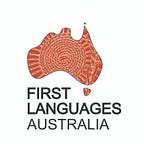Case study — Indigenous languages in Timor-Leste schools
Prepared by Arathi Raghunathan for Global Lessons: Indigenous languages and multilingualism in school programs
The situation in Timor-Leste is interesting, with 17 Indigenous languages being spoken alongside a national and international languages. This multilingual nation with three recent historical phases has seen the rise of coloniser languages, which have been awarded prestige over traditional languages. These phases are: Portuguese colonisation (from the 1500s to 1975), occupation by Indonesia (from 1975 to 1999), and Independence (in 1999). In 2002, the Constitution of Timor-Leste adopted ‘a plurilingual national identity’ attributing ‘national language’ status to Tetun, with equal official language status given to Portuguese. One Papuan language and 15 other Indigenous languages also have official recognition and are protected (Taylor-Leech, 2008). The Basic Education Act (2008) brought reformation with respect to languages, guaranteeing nine years of compulsory, free education to all citizens. The languages of instruction were to be Portuguese and Tetun, with English introduced in the late primary years as the ‘designated first foreign language’ (Taylor-Leech, 2013).
Later, the Timor-Leste Strategic Development Plan was formulated, providing a vision and set of strategic policies for 2011–2030. In this document, the plan for an accessible quality education system includes adopting the recommendations of the UNESCO ‘Mother Tongue-Based Multilingual Education Policy for Timor-Leste’. According to this, mother tongue languages, the languages in the home environment of the students, are to be used as the language of instruction in the initial years to help ‘build a solid foundation for future literacy and numeracy’ in Portuguese as well as Tetun (Taylor-Leech, 2013). The focus is on the language that the student knows the best. In secondary education, Portuguese and Tetun are to be the languages of instruction.
In mother tongue education, the home or first language (L1) is used as the medium of instruction from pre-primary until the end of grade 3. Tetun is taught orally by instructors from pre-primary to grade 1, is the instructional language from grade 1 to 3, and an additional subject from grades 2 and 3. Portuguese is used orally from grades 1 to 3, and then from grade 4 it is both the medium of instruction and a subject along with Tetun, in what is essentially a transitional bilingual program. Where possible the L1 continues to be used as a medium of instruction after grade 4.
To pilot this model, ‘demonstration schools’ (6 pre-primary and 6 primary) were selected from three districts. The role of various languages at different stages is shown below.
The evaluation of the model by Caffery, Coronado, Hodge & Taylor-Leech (2014) suggests that teachers and teaching assistants made every effort to use the L1 of the students, which reinforced the transfer principle of mother tongue-based multilingual education. According to their evaluation report, the model was successful and demonstrated that literacy could be achieved both in the mother tongue as well as in the subjects in the curriculum. The introduction of mother tongue education has brought about various changes:
· a positive learning environment
· improved relations between students, teachers, parents and communities
· a positive change in school attendance, and
· a more child-centred approach to education.
· The existence of an independent evaluation is an important element to the Timor-Leste case study. Having to stop, assess practice, replan and refine is critical to program improvement over time.
Lessons from the Timor-Leste case study
· Providing learning in the language children know best is effective, and other languages can be added to a firm foundation in the mother tongue.
· Program evaluation is important for identifying and documenting strengths and areas to change or improve.
References
Caffery, Jo, Gabriela Coronado, Bob Hodge, and Kerry Taylor-Leech. (2014). The Timor-Leste Mother Tongue Based Multilingual Education Pilot Project: A Strategic Evaluation. Western Sydney University. Retrieved September 28, 2017, from https://www.westernsydney.edu.au/__data/assets/pdf_file/0006/782709/MTB-MLE_Report.pdf
Timor-Leste Strategic Development Plan 2011–2030 (2011). Retrieved September 28, 2017, from http://timor-leste.gov.tl/?p=5289&lang=en
